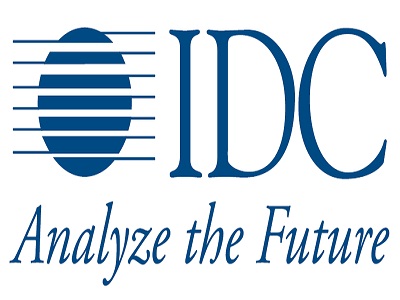E-Business
Worldwide Smart Connected Device to Slow to 3.1% In 2017

The worldwide smart connected device market comprised of PCs, tablets, and smartphones, is forecast to grow 27.8% year over year in 2013, slightly lower than the 30.3% growth in 2012.
However, in terms of shipment value, the worldwide smart connected device market will again exhibit double-digit year-over-year growth of 10.6% in 2013, but this growth will gradually slow to just 3.1% in 2017, according to the International Data Corporation (IDC) Worldwide Quarterly Smart Connected Device Tracker.
Meanwhile, the growth will be driven by tablet and smartphone shipments, while the PC outlook has been lowered by 10% in 2013.
The Device Tracker expects tablet shipments to surpass total PC shipments (desktop plus portable PCs) in the fourth quarter of 2013 (4Q13). PCs shipments are still expected to be greater than tablet shipments for the full year, but IDC forecasts tablet shipments will surpass total PC shipments on an annual basis by the end of 2015.
Smartphones will continue to ship in high volumes, surpassing 1.4 billion units in 2015 and accounting for 69% of all smart connected device shipments worldwide.
Thus, in terms of shipment value, the worldwide smart connected device market will again exhibit double-digit year-over-year growth of 10.6% in 2013, but this growth will gradually slow to just 3.1% in 2017.
The tapering revenue forecast reflects the increasing impact of low-cost smartphones and the white box tablet market. Worldwide smart connected device value is expected to be $622.4 billion in 2013, of which $423.1 billion will come from the sub-$350 smartphone and sub-$350 tablet segments collectively.
“At a time when the smartphone and tablet markets are showing early signs of saturation, the emergence of lower-priced devices will be a game-changer,” said Megha Saini, research analyst, IDC Worldwide Quarterly Smart Connected Device Tracker.
“Introducing new handsets and tablet devices at cheaper price points along with special initiatives like trade-in programs from Apple and BestBuy will accelerate the upgrade cycle and expand the total addressable market overnight.”
IDC also expects the lower-cost devices to drive interest worldwide and help to spark uptake among first-time buyers in commercial sectors like education.
A new round of device cannibalization is also expected to kick in, but this time with large-screen (5+ inch) smartphones beginning to impact the smaller (7-8 inch) tablet market.
According to Bob O’Donnell, program vice president, Clients and Displays, “The device world has seen several iterations of cannibalization impacting different categories, with the last few years focused on tablets cannibalizing PC sales. Over the next 12-18 months, however, we believe the larger smartphones, commonly called ‘phablets’, will start to eat into the smaller-size tablet market, contributing to a slower growth rate for tablets.”
Looking forward, the worldwide smart connected device space will continue to surge, with overall shipments surpassing 2 billion units by the end of 2015 with a market value of $735.1 billion.
In terms of device mix, total PC shipments accounted for 28.7% of the smart connected device market in 2012 while tablets accounted for 11.8% and smartphones for 59.5%.
By 2017, total PCs are expected to drop to 13%, while tablets and smartphones will contribute 16.5% and 70.5% respectively to the overall market.
The shift in demand from the more expensive PC category to more reasonably priced smartphones and tablets will drive the average selling price (ASP) for the collective market from $462 in 2012 to $323 in 2017.
E-Business
Galaxy Backbone, Rural Electrification Agency Commit to Deepening Digital and Energy Access Across Nigeria

In a major step towards deepening Nigeria’s digital and energy infrastructure, Galaxy Backbone Limited (GBB) and the Rural Electrification Agency (REA) have signed a strategic Memorandum of Understanding (MoU) at a brief but impactful ceremony held in Abuja.

The MoU signals a collaborative effort between both agencies to enhance Nigeria’s digital transformation agenda by integrating reliable energy solutions with cutting-edge ICT infrastructure, especially in higher institutions, Government institutions, underserved and rural communities across the country.
Speaking at the event, the Managing Director/CEO of Galaxy Backbone, Professor Ibrahim A. Adeyanju, described the partnership as “a landmark moment in Nigeria’s journey towards a digitally empowered, sustainably powered, and inclusively connected nation.”
“This partnership exemplifies what is possible when two visionary government institutions come together, united by shared goals and driven by the desire to improve the lives of Nigerians everywhere,” he said.
Professor Adeyanju emphasized that while Galaxy Backbone’s core mandate is to provide secure digital infrastructure that powers government operations, reliable and sustainable energy particularly in rural areas is essential to fully actualize digital transformation.
Major highlights of the MoU include:
- Solar electrification of some of GBB’s Metro Fibre sites in Abuja by the REA.
- Powering Hostels of Higher Institutions across the country through the Fibre to Hostel Project being driven by the Federal Ministry of Communications Innovation and Digital Economy (FMCIDE).
- Support for the rollout of the 774 Local Government Digitization Initiative, beginning with six pilot Local Government Areas.
- Provision of LANs, access points, cloud services, colocation infrastructure, and temporary connectivity to enhance REA’s operational facilities nationwide.
The Managing Director of the Rural Electrification Agency Mr Abba Aliyu, in his remarks, expressed optimism that this collaboration will further bridge the digital and energy divide across Nigeria. He noted that by combining REA’s achievements in expanding energy access with GBB’s robust ICT backbone, both agencies are poised to create lasting impact across governance, education, healthcare, and entrepreneurship.
This partnership is also in direct alignment with the Renewed Hope Digital Transformation Agenda of President Bola Ahmed Tinubu, GCFR, which envisions an inclusive digital economy powered by innovation and sustainable energy.
The ceremony was attended by top management from both organizations as well as members of the media.
With today’s signing, Galaxy Backbone and the Rural Electrification Agency have set the tone for stronger, smarter, and more inclusive public service delivery powered by strategic inter-agency collaboration.
E-Business
NIMC Says NIN Services Back Online

National Identity Management Commission (NIMC) has announced the restoration of its National Identification Number (NIN) verification services nationwide.

This, according to the commission, follows the completion of a system maintenance exercise.
In a statement issued on Friday, the NIMC confirmed that all previously disrupted services have resumed.
“NIMC wishes to inform the general public that the recent technical maintenance has been completed and all services have been restored,” the statement read.
The NIMC urged Nigerians seeking to enroll for NIN to visit the its official website to locate the nearest enrollment centers.
The agency also encouraged individuals to make use of its self-service portal for tasks such as data modification, including name changes.
To further ease the verification process, the Commission recommended downloading the NIMC NameAuth app (oath.app) from the Google Play Store or Apple App Store for quick and secure NIN authentication.
NIMC expressed appreciation for the public’s patience during the service disruption, which had impacted banks, telecom providers, and government agencies that rely on NIN verification for their operations.
E-Business
Report Reveals African Organizations Dangerously Overestimating Cyber defences

Many businesses are overestimating their defence against cyber attacks, which creates a significant human risk blind spot. A new KnowBe4 report exposes a worrying disconnect between what leaders think about their cyber security readiness and what employees experience.

According to the KnowBe4 Africa Human Risk Management Report 2025, based on insights from cyber security decision-makers across 30 African countries, despite high awareness, a critical gap exists in turning that awareness into actual readiness and resilient behaviour.
Key findings from the KnowBe4 Africa Human Risk Management Report 2025:
Confidence vs awareness: While cyber security awareness is high, leaders express uncertainty about their workforce’s ability to act on that awareness. Many feel employees may overestimate their capabilities in recognising, reporting and mitigating threats.
The need for adaptive and personalised security awareness training: Many companies fail to personalise security awareness training to specific roles or risk exposures.
Widespread BYOD usage: A large percentage of employees (between 41% and 80%) use their personal devices for work.
AI policy development is lagging: Many companies (46%) are still in the process of developing policies for using AI tools in the workplace.
Regional variation: Southern Africa trains more, East Africa governs AI better and West/Central Africa sees the most human-related security incidents.
This gap is significant because Africa has become an attractive target to cyber criminals, especially those that launch AI-powered attacks. A LexisNexis Risk Solutions study found 60% of South African organisations have seen an increase in AI-facilitated financial crime – above the 56% global average.
Kehinde Popoola, regional manager and key representative for West and East Africa at Rubrik, said digital transformation is gaining momentum in Africa and companies are more exposed to cyber risk. The Rubrik executive adds that amid an increase in threats, it is crucial that organisations adopt an assumed breach mindset.
The KnowBe4 research shows that cyber security preparedness and the actual structures required to support secure behaviour seem misaligned.
The report highlights that just 10% of cyber security leaders are fully confident that staff would report a phishing attack or other cyber threat, despite rating employee security awareness of cyber threats at four out of five or higher.
There is also a significant perception gap between decision-makers and general employees in Africa regarding security awareness training, with 68% of leaders believing that training is tailored to roles, compared to only a third of employees feeling adequately trained.
KnowBe4 asserts that many organisations only conduct annual or biannual training that is too generic to effectively change behaviour, contributing to uncertainty about its effectiveness.
According to another report, the KnowBe4 African Cybersecurity and Awareness Report 2025, which focuses on end-user based responses, only 43% of African respondents felt confident in their ability to recognise a cyber threat, and just one in three believed their security awareness training was adequately tailored to their role. This comparison suggests the development of a dangerous perception gap in many organisations.
“There’s a disconnect here – between what leaders think is happening and what employees are actually experiencing,” says Anna Collard, SVP content strategy and evangelist at KnowBe4 Africa. “The data shows that without procedural and cultural follow-through, awareness simply doesn’t translate into readiness.”
“The continent’s cyber security posture may be more confident than it is truly resilient,” Collard adds.

 E-Financial3 days ago
E-Financial3 days agoCourt Affirms NIBSS Authority to Manage BVN

 Telecom3 days ago
Telecom3 days agoMTN, 9mobile Commence Ground-breaking National Infrastructure Partnership

 E-Financial3 days ago
E-Financial3 days agoNigerian Banks End Years of Embargo, Resume Intl Transactions on Naira Cards

 E-Business3 days ago
E-Business3 days agoNIMC Says NIN Services Back Online

 General News3 days ago
General News3 days agoCybervergent Selected as World Economic Forum’s 2025 Technology Pioneer Company

 Telecom3 days ago
Telecom3 days agoKarl Toriola Champions Digital Education for Employability @Sigma Club Lecture

 E-Financial3 days ago
E-Financial3 days agoFlutterwave Secures 20 more US Money Transmitter Licences

 E-Business3 days ago
E-Business3 days agoReport Reveals African Organizations Dangerously Overestimating Cyber defences



























